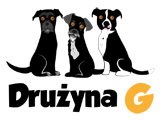
Shaping! We all know what a great tool it is when it comes to teaching our animal new behaviors. Do we know why? In this article I will list some of the advantages of shaping, a self-directed strategy of learning. There are many great things we can do with our learners, using shaping skills.
What are the advantages of self-directed strategie:
- Creativity development. You are not limited by a certain solution, there is no answer-key on how you have to do a behavior. A learner can experiment and make his way to the final behavior on his own. Sometimes you may be surprised that if you go with the flow the behavior will change during a training session in a way you would never expected and have never achieved if it was done by a directed strategy. The learner is able to be creative and do the behavior in his own way. If we compare it to humans if you give the learner tools to create a simple electric gear, he may invent something you would never expected.
- Better memory of the behavior.[1] It is suggested by scientific analysis and researches that active learning stimulates and influences better memory of the learned behavior. Many test on myelin function of the cognitive processes of the brain suggest that if we learn through self-directed strategy the behavior will be stronger. A very good example is using following someone to drive to the friend’s house. Person A got from point X to the friend’s house by following someone else’s car. Person B knows the address of the friend’s house but needs to ask for direction. After even one trip only, when we ask person A about the directions to the friend’s house there is a great probability that person A doesn’t know them. Because this person was not actively engaged in process of finding direction. We can expect the opposite from the person B. Because of active engagement in the process of learning directions.

- Behavior independent from lures and prompts. If you lured the behavior you are depended on the lure. Withdrawing prompts and lures is time consuming and they will always be a part of learning history. This means that if not fade out properly, on the right time may always be a part of the stimuli for the behavior. Self-directed strategies are not lure/prompt dependent from the start. In the learning progression teacher doesn’t have to fade out the prompts, lures.
- Choice of behaviors. There are behaviors we can teach only by using self-directed strategies. Those behavior can’t be lured or prompted. They have to be offered, initiated by the learner, to be shaped. For example: tail wag, barking, blowing bubbles under water. Shaping in other words is differential reinforcement of successful approximations, which means we can create a progression of behaviors through adjusting reinforcement and planned progression how to achieve the targeted behavior. This allows us to choose from behaviors that our animal offers and
- Study of the behavior. To use self-directed strategy with necessary skills and caution we need to have a very good ability to observe, read and assess behavior on the spot. Causal link between reinforcement and behavior requires from us, teachers previous study of our learner. I believe this is an advantage because it requires from us learning prior to the training session. We need to study behavior profiles to know topographies, functions and future applications. It makes us more thoughtful trainers.

But are there only advantages? Definitely not, shaping is an advanced skill and requires from the handler knowledge and experience. In the next article I will example the topic of shaping disadvantages.
Agnieszka Janarek – Dog Trainer
[1] Neuroscience research suggests that active engagement is necessary for learning. The changes in neuronal connections that underlie learning in the brain do not seem to occur when learning experiences are not active. http://www.howyouthlearn.org/pdf/Mind%20Brain%20Education.pdf
